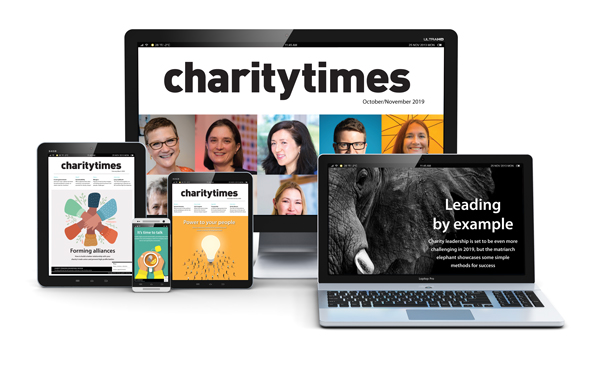Andrew Wilkins, co-founder and CEO of Futr talks about how it's working with charity CALM to cut wait times by using AI.
________________________________________________________________________
The question of how to engage with growing user numbers in a way that enhances their experience with your charity and provides accurate, helpful and timely information is a pressing one. The Covid-19 pandemic heaped unprecedented pressures on call centres, volunteers and care teams, who needed to operate remotely and often handled higher volumes of enquiries.
This was the case for suicide prevention charity Campaign Against Living Miserably (CALM), which found that its volume of enquiries increased as the country entered lockdown. In 2021 CALM answered over 155,000 calls and chats; that’s a call for help every 59 seconds and over one million minutes of talking to people around topics such as isolation, anxiety, relationship concerns, health worries, and financial stress.
As part of the charity’s digitisation plans it was already looking to embrace AI technology to help relieve some of the workload on call handlers. But the onset of the pandemic sped things up. Futr was brought on board to support this process and provide the necessary technology to handle the surge in enquiries.
Technology can help charities engage users
Our chatbot and live chat feature was adopted by CALM in 2021 under the name QBot. QBot sits on CALM’s website and is able to engage users 24/7, triage queries, service relevant help and advice content from the website, and connect them with an appropriate live agent during helpline open hours. The AI-enabled chatbot has empowered CALM to become a 24/7 support service with a near-immediate response time (previously callers waited to speak to an available agent during specified opening hours).
The benefits of 24/7 availability are vast – and never more relevant than with charities dealing with people who are struggling with their mental wellbeing or in crisis. Manually handling calls at all hours of the day and night is hugely costly and requires a shift in infrastructure that is out of reach for most small to mid-sized charities. Technology can fill this gap and as people become used to dealing with businesses and brands through automated chat functions, it becomes increasingly natural for communication to take place in this manner.
In the first 11 months of using the QBot, more than 26,000 connected users and 1.3 million messages were received. The automated service helped answer 52,500 questions with an average response time of 1.2 seconds and helped to reduce queue times. This is in addition to the 47,700 conversations that have already taken place through the chatbot.
Using AI to reach more people
The webchat function provides people with an option to chat through text rather than voice to communicate how they are feeling. This can be a huge benefit to people in crisis, particularly younger ‘digital natives’ who can find it easier to communicate in this way.
AI technology can be implemented across multiple channels beyond websites, such as social media channels, instant messengers and WhatsApp, allowing users to engage with charities on whichever platform they are most comfortable with. And, importantly for many charities, the technology is capable of communicating in over 100 languages – aiding communications with hard-to-reach audiences.
As a pre-developed plugin, technology such as this is affordable and speedy to implement - making it an ideal choice for many charities which are operating on a budget.
Technology implementation can also support charities’ strategic development by capturing data which helps identify key and recurring needs of users and develop content to meet those specific needs. Harnessing insight like this is incredibly valuable and helps charities make sure they are proactively talking to users and would-be users about issues that are affecting them right now.
Charities are facing incredible pressures currently and technology can help ease the burden. For CALM, it needed to be able to direct resources towards those most in need, provide access 24/7, and reach service users on the channels and apps they are comfortable with. As the charity’s chief executive officer, Simon Gunning, pointed out, “we will be able to radically scale our service provision through one route only – technology.”
Charity Times video Q&A: In conversation with Hilda Hayo, CEO of Dementia UK
Charity Times editor, Lauren Weymouth, is joined by Dementia UK CEO, Hilda Hayo to discuss why the charity receives such high workplace satisfaction results, what a positive working culture looks like and the importance of lived experience among staff. The pair talk about challenges facing the charity, the impact felt by the pandemic and how it's striving to overcome obstacles and continue to be a highly impactful organisation for anybody affected by dementia.
Charity Times Awards 2023
Mitigating risk and reducing claims

The cost-of-living crisis is impacting charities in a number of ways, including the risks they take. Endsleigh Insurance’s* senior risk management consultant Scott Crichton joins Charity Times to discuss the ramifications of prioritising certain types of risk over others, the financial implications risk can have if not managed properly, and tips for charities to help manage those risks.
* Coming soon… Howden, the new name for Endsleigh.
* Coming soon… Howden, the new name for Endsleigh.
Better Society

© 2021 Perspective Publishing Privacy & Cookies











Recent Stories